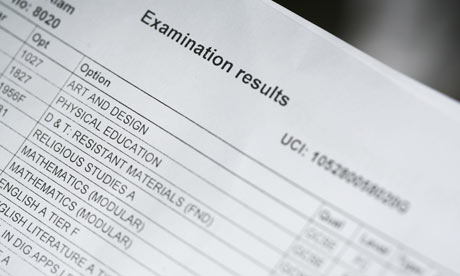
This summer hundreds of thousands of teenagers in England, Scotland and Wales received their exam results. It is a daunting time as their envelope is ripped open to reveal their results. For many, it is a time of joy and celebration, as all the years of hard work and effort pay off. For the rest, it is a time to maybe rethink and set a slightly different future path.
The results for this year were broadly stable from last year with passes at grades A* to C up 0.2% year on year.
Key Stats
69% awarded A* – C grade – up 0.1% on 2014
111% increase in computing
3.7% increase in English A* – C grades.
Exam boards have said that this year’s results have been influenced by the changing age ranges of those taking GCSE’s. The Government has discouraged schools from entering younger pupils for exams and has also introduced a policy which requires pupils to re-sit Maths and English if they fail to get at least a C grade which means there are more 17 year olds taking exams.
Another trend highlighted by the examination boards has been a marked drop in the number of students taking modern foreign languages (MFL) with falling numbers across Spanish, German and French.
Regional Variations
The regional variations across England make for interesting reading. London saw the best results with 72% of students achieving A* – C grades. The Humber region and Yorkshire saw the lowest with only 65% achieving similar grades. The best results overall were in Northern Ireland where the overall number of passes rose by 0.7% to 78.7%. Wales saw almost no movement in the number of passes which remained static year on year at 66%.
A Level Results
This years A level results brought with them a blend of good news for some students, and disappointment for others.
On the whole the results for students are almost exactly the same as they were last year. Exam regulators look for “stability” as this helps promote reassurance and continuity in grades rather than turbulence of over / under achievements on a yearly basis.
The A level results for this year mark the end of the old exam system. The former education secretary Michael Gove, announced plans for a tougher, non-modular examination system and for the decoupling of A and AS levels and these as yet still have to be introduced.
In line with the trend in GCSE’s there continues to be a long term decline in the number of students taking MFL at A level.
University entries
There is also a relentless tide of students still wishing to go to University once their A level education finishes.
In 1980, around 68,000 people achieved undergraduate degrees. By the year 2000, that had risen to 243,000, an increase of around 257%. And this year, even before clearing had opened and second choice places had been considered, 409,000 places had been accepted.
It also has to be acknowledged that whilst there is a steady upward rise in the number of young full-time students wishing to go on to University, the numbers of part-time and mature student entries have fallen considerably, since the rise in tuition fees a few years ago.
Gender Divide
In 2014, the gap between men and women achieving university places was at its widest with 58,000 more women being accepted. And even though it is still very early days, this year looks as if the gender gap will be even wider.
Apprenticeships
A recent article in the news concerned plans by David Cameron to increase the number of apprenticeship programmes big businesses offer.
All large companies, bidding for government contracts worth more than £10m must, in future, show that have a “reasonable proportion” of apprentices.
The Prime Minster is quoted as saying “The greatest asset any employer has is its workforce. And by investing in them, they are investing in the success and future of their business”.
The Government has also confirmed its plans to introduce an apprenticeship levy. This would be paid by large companies and would create a fund that would be used to train workers. At present, there is no detail around who would be required to pay the levy and how much it would be so many manufacturers and large companies are sceptical about how this would be implemented. David Cameron has pledged that the levy would be used to support 3 million apprenticeships by 2020.
The British Chamber of Commerce (BCC) has welcomed the announcement of the levy and of the apprenticeship plan. But warns against targeting just the larger organisations as it feels that far smaller, local businesses and SME companies have an equally important role to play in training apprentices to plug the skills gap.
“Apprenticeship schemes can play a part in meeting important ambitions to boost skills and drive-up productivity” said John Longworth, the business group’s director general. “Government policy is currently too focused on major employers, but equal effort ought to be put on encouraging and supporting smaller businesses to offer apprenticeships”.
Originally written 9 September 2015